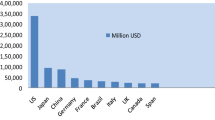Abstract
Bioinformatics is defined as the application of tools, computation, analysis to capture the bioactivity data and interpretation of biological data. To develop or to discover the drug, the biological information of proteins, cells, RNA’S, DNA is required to analyze those functional behavior of compounds structures, physical and chemical properties. For example: In the process of discovering a new protein sequence, it utilizes the known/existing sequences in order to compare the similarities or features of the newly discovered sequence. By looking, we can roughly tell about the functioning of the newly discovered sequence of proteins. Drugs are one of the chemical substances that can change the way our body and mind works. Discovery of drugs aims to find the compounds that are classified based on the threshold values to be active or an inactive and then analyzes drug-likeness properties of compounds like absorption, distribution, metabolism and excretion (ADME). Then, we compared the molecular features and properties of each and every compound once the salts, impurities, organic acids are removed from the molecular structures. This comparison helps in preparing the dataset with PubChem fingerprints and pIC50 values as X (input variables) and Y (output variables). In the proposed system, decision tree regressor got good performance in its R-squared value and got the very lowest RMSE. Hence, the time taken for the evaluation is also very very low. These values represent that the proposed dataset is fit for regression prediction based on values achieved in work. Finally, the scatter plot is builded in between the experimental and the predicted values of pIC50 to get the line of regression. In general, this application can be helpful for doctors and researchers in developing a drug.
Access this chapter
Tax calculation will be finalised at checkout
Purchases are for personal use only
Similar content being viewed by others
References
Quazi S (2021) Role of artificial intelligence and machine learning in bioinformatics: drug discovery and drug repurposing. 10.20944 / preprints 202105.0346.v1
Tripathi MK, Nath A (2021) Evolving scenarios of big data and Artificial Intelligence in drug discovery. Mol Diversity 1–23
Manne R (2021) Machine learning techniques in drug discovery and development. Int J Appl Res IJAR 21–28
Kitchin R, McArdle G (2016) What makes big data, big data? exploring the ontological characteristics of 26 datasets. Big Data Soc. https: //doi.org /10.1177/ 2053951716631130
Bhadani A, Jothimani D (2017) Big data: challenges, opportunities and realities. CoRR abs/1705.0
Carracedo-Reboredo P, Liñares-Blanco J (2021) A review on machine learning approaches and trends in drug discovery. Comput Struct Biotechnol J 4538–4558
Bagherian M, Najarian K (2021) Machine learning approaches and databases for prediction of drug-target interaction oxford-department of computational medicine and bioinformatics 247–269
Gupta R, Srivastava D (2021) Artificial intelligence to deep learning: machine intelligence approach for drug discovery. Mol Diversity 1315–1360
Duch W, Swaminathan K, Meller J (2007) Artificial intelligence approaches for rational drug design and discovery. CurrPharmDes. https://doi.org/10.2174/13816120778076595
Zhang L, Tan J, Han D, Zhu H (2017) From machine learning to deep learning: progress in machine intelligence for rational drug discovery. Drug Discov Today. https:// doi.org/ 10.1016/j. Drudis 08 010
Jordan AM (2018) Artificial intelligence in drug design–the storm before the calm? ACS Med Chem Lett. https://doi.org/10.1021/acsmedchemlett. 8b00500
Lo YC, Rensi SE, Torng W, Altman RB (2018) Machine learning in chemoinformatics and drug discovery. Drug Discov Today 23:1538–1546
Refioglu AS, Atas H, Martin MJ, Cetin-Atalay R, Atalay V Do ˘gan T (2019) Recent applications of deep learning and machine intelligence on in silico drug discovery: methods, tools and databases. brief bioinform. Int J Appl Res IJAR 1878–1912
Patel L, Shukla T, Huang X, Ussery DW (2020) Machine learning methods in drug discovery MDPI. Molecules. https://doi.org/10.3390/molecules25225277
Chen SH, Jakeman AJ, Norton JP (2008) Artificial intelligence techniques: an introduction to their use for modeling environmental systems. Math Comput Simul 78(2–3):379–400
Author information
Authors and Affiliations
Corresponding author
Editor information
Editors and Affiliations
Rights and permissions
Copyright information
© 2023 The Author(s), under exclusive license to Springer Nature Singapore Pte Ltd.
About this paper
Cite this paper
Prabha, S., Sasikumar, S., Surendra, S., Chennakeshava, P., Reddy, Y.S.M. (2023). Drug Discovery Analysis Using Machine Learning Bioinformatics. In: Khanna, A., Polkowski, Z., Castillo, O. (eds) Proceedings of Data Analytics and Management . Lecture Notes in Networks and Systems, vol 572. Springer, Singapore. https://doi.org/10.1007/978-981-19-7615-5_36
Download citation
DOI: https://doi.org/10.1007/978-981-19-7615-5_36
Published:
Publisher Name: Springer, Singapore
Print ISBN: 978-981-19-7614-8
Online ISBN: 978-981-19-7615-5
eBook Packages: Intelligent Technologies and RoboticsIntelligent Technologies and Robotics (R0)




